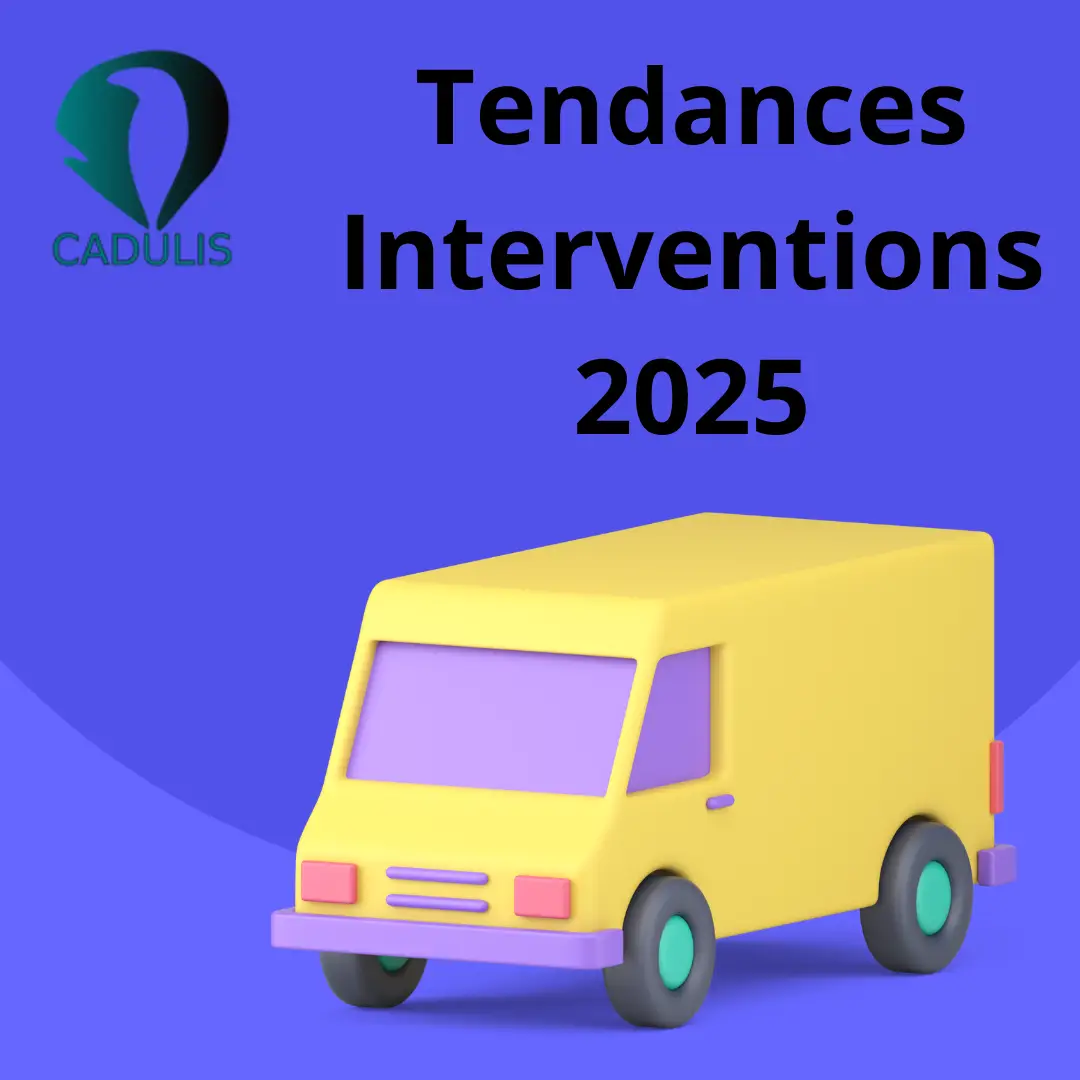1. Digitalization Becomes an Unavoidable Standard
In 2025, digitalization of field operations is no longer an option, but a necessity. Specialized software like Cadulis is seeing massive adoption, enabling companies to better plan and monitor their interventions. The trends in field service management are thus focused on route management, communication with technicians, and the exploitation of data, all of which are now centralized and automated.
Some Key Figures:
- +30% of companies have adopted field service management software in 2025 compared to 2023.
- 80% of maintenance and installation companies use mobile applications for their technicians.
- 15% reduction in time spent on planning thanks to AI and route optimization tools.
2. Addressing the Sector’s Persistent Challenges
Field service companies face many challenges:
- Labor shortage: recruitment difficulties require maximizing the efficiency of each technician.
- Rising costs: with increasing fuel prices and wages, profitability must be closely monitored.
- More demanding customers: expecting transparency, speed, and quality of service.
- Managing the unexpected: breakdowns, delays, last-minute changes require increased responsiveness.
3. The 3 Trending Topics for Field Operations in 2025
Artificial Intelligence Serving Planning
AI plays a key role by enabling smarter and more adaptive planning. It takes into account technicians’ skills, their proximity to customers, and the urgency of interventions.
Augmented Reality for Remote Assistance
Connected glasses and augmented reality applications allow on-site technicians to be assisted in real time by remote experts, thus reducing unnecessary travel.
The Rise of Connected Devices (IoT)
Thanks to sensors and smart equipment, companies can detect failures before they occur, thus limiting emergency interventions and increasing customer satisfaction.
4. The Essential KPIs in 2025
Companies closely monitor several indicators to optimize their operations:
- Average intervention time: reduced thanks to better planning.
- Customer satisfaction rate: now a central concern, it reaches an average of 85% in digitalized companies.
- Number of interventions per day per technician: increased by 110% thanks to route optimization.
- Operational costs: down by 15% thanks to automation and digital tools.
- First-time fix rate: a priority to limit costs and improve customer experience.
5. Barriers to Adopting New Technologies
Despite these advances, some companies are still hesitant to take the leap for their field operations. Among the main barriers:
- Resistance to change: teams may be reluctant to adopt new tools.
- Initial investment cost: although profitable in the long term, digital solutions require an upfront budget.
- Integration complexity: some companies fear difficulties interfacing these tools with their existing systems.
6. Cadulis: An Ally to Overcome These Challenges
Companies that adopt Cadulis benefit from many advantages:
- Time savings: automation reduces time spent on planning and administrative tasks.
- Reduced travel: optimized routes to limit kilometers traveled.
- Optimized planning: AI and advanced algorithms to assign the right tasks to the right technicians.
- Satisfaction for technicians and customers: streamlining the work of field teams and improving the customer experience.
Conclusion: An Industry in Rapid Transformation
The trends in field service management in 2025 show a major transformation of the sector. Digitalization, AI, and connected devices are redefining standards of efficiency and customer satisfaction. While some barriers remain, companies that adopt these innovations gain an undeniable competitive advantage.
With solutions like Cadulis, it is now possible to meet these challenges and turn field service management into a lever for performance and profitability.








